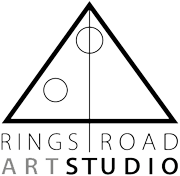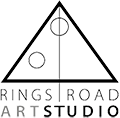Brushes
There are three main types of brushes that we use in painting classes at the studio.

Round

Round or pointed tip
Used for: sketching, outlining, detailed work, creating a varied line, small washes studies, becomes wider when pressed down, for diluted paint rather than thick paint.
Flat

Square head, medium to long hair.
Used for: filling wide areas, washes, bold strokes, vanishing, can use edge for fine lines
.
Filbert

Flat and oval shaped end with medium to long hairs
Used for: blending, covers more area, soft rounded edges
Fan

Shaped like a fan
Used for: blending, softening tones, creating textural effects such as leaves on trees, clouds
Pointed Rounded

Pointed tip
Used for: details and re touching
Bright

Short haired brush and curved inwards with flat head
Used for: short controlled strokes, thick and bold application.
.
Angular Flat

Flat with angled hairs at end
Used for: filling in corners, curved strokes, can be used to cover lots of space because of its flat shape
Rigger

Long haired brush with rounded tip.
Used for: creating effects such as tree branches, grass, fine delicate lines, must be used with thinned out paint.


